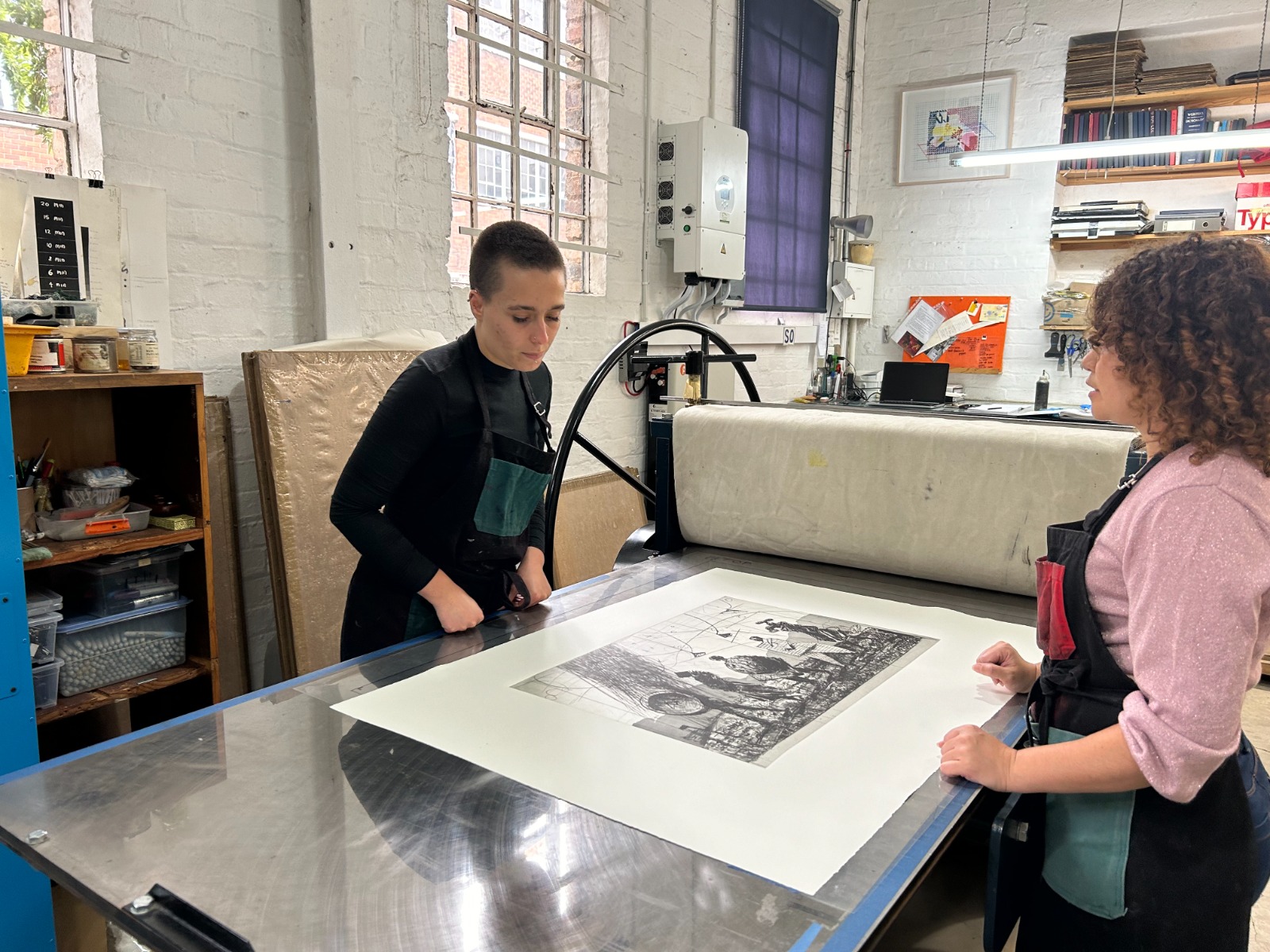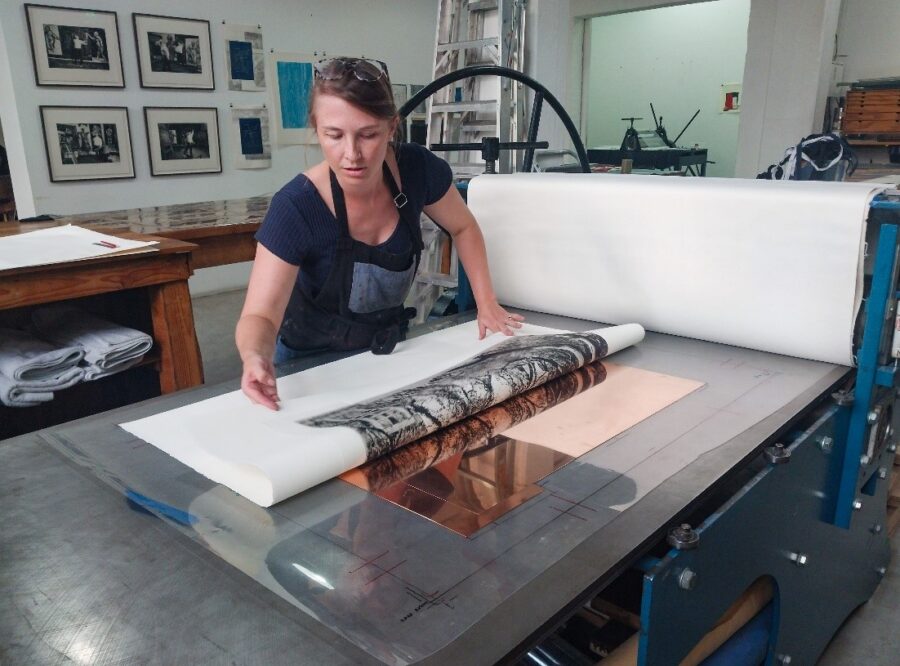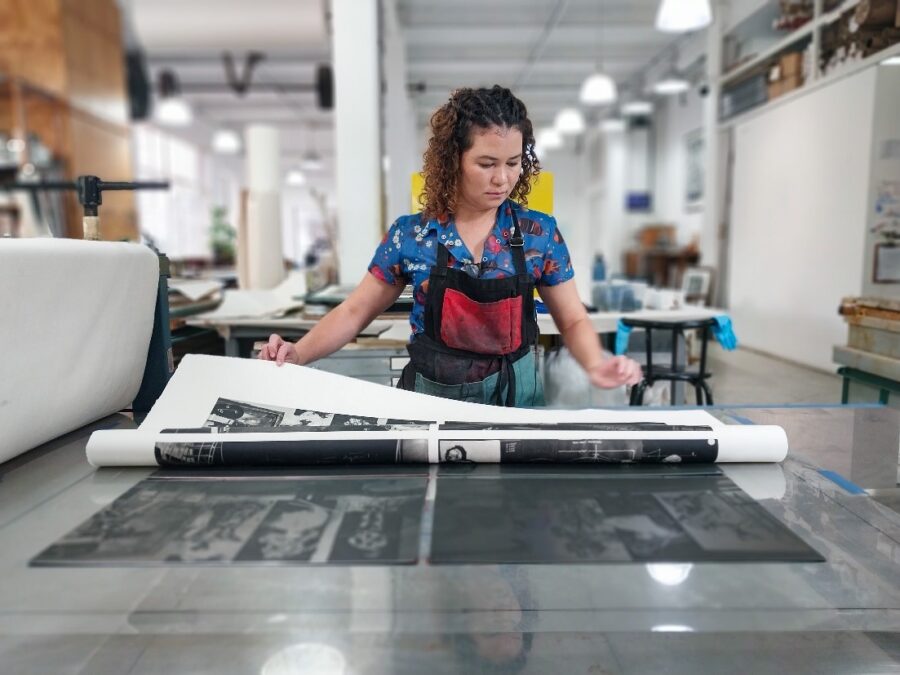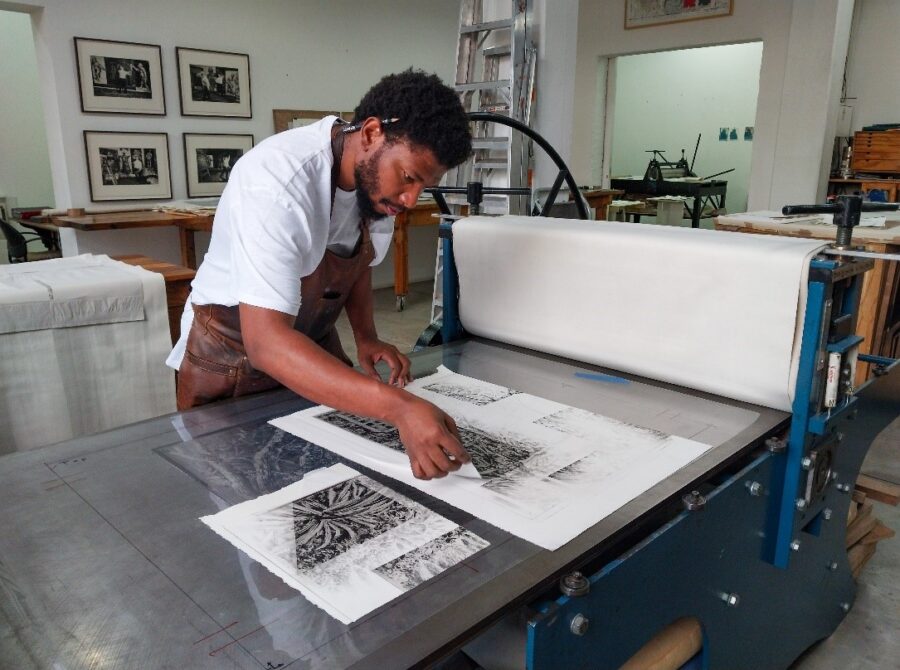Experimentation and the integrity of plates: Abigail Nel's internship experience




Cloudy, rainy weather amidst Joburg’s summer season has welcomed us to our work week start. My first day was filled with awe – both excitement and fear. I felt shy being in this well organised workspace, but everyone was friendly and welcoming. I am excited to kick start the year by interning at David Krut Workshop. My first week entailed an introduction to how DKW operates. I was encouraged to observe and familiarise myself with their set-up. I was assigned three ongoing tasks: de-stapling belts, preparing tarlatan, and sorting through rags. These monotonous tasks need to be done as their completion facilitates workflow.
Cyanotype Experiments
Second week in studio: Sibongeseni started a collaborative project with artist Peter Cohen. Two image-making methods were initially explored – cyanotype and woodcut. I assisted Sibongeseni alongside Jesse with some of the initial experiments. While in DKW’s semi darkroom, I got to marvel at intricate and varied woodcut mark-making on wall tall William Kentridge prints which Sibongeseni worked on.





Steel-facing a copper plate
The purpose of steel facing a copper plate is to retain the copper plate’s integrity against constant usage during edition making. By adding a steel face layer on plate, the image’s etched marks are protected to yield consistent outcomes.
I was allowed to steel face a piece of Sibongeseni’s etching plate as practice test after his demo of this alchemical process. This was daring of Sibongeseni to let the intern work with the artist’s precious plate, but his offering did make the experience effective and unforgettable.




Chinne Colle Preparation
Week three in studio: Roxy, Sibongeseni and Jesse continued editioning Traversing Gardens, a collaborative project between David Krut Projects, artist William Kentridge, and Jillian Ross Prints.
Roxy and Jesse prepared and printed the first layer onto a Hahnemule sheet as the base. Sibongeseni printed multiple pieces from the Small Gardens’ B.A.T. Jesse and I assisted Sibongeseni with gluing pieces of printed chine onto the perspex surface.


Keeping an updated registration on acetate was essential for the Traversing Gardens project, since Roxy and Sibongeseni were layering multiple parts during the editioning process. Sometimes printing becomes challenging when factors like studio temperature, damp paper drying rapidly, placements shifting from their exact positioning on registration, or press blanket ripples, to list a few possibilities, which could detract from the consistent quality required of each print.


Through trial and troubleshooting discussions, Roxy and Sibongeseni figured out a better way forward. Roxy shared a wise sentiment that has stuck with me ever since, which was something along the lines of: never make the same mistake twice. If something is not working as needed, ask yourself what needs to change, in order to achieve the best outcome.
Watercolour Monotype
Week three in studio: I assisted Kim-Lee while she worked with artist Heidi Fourie.
I learnt how to prepare perspex sheets with Gum Arabic as a plate for watercolour monotypes. The first step is to degrease the perspex plate with Handy Andy and water to prevent application of Gum Arabic from reticulating. Once the plate is degreased and dry, a hands-off application of Gum Arabic is next. Applying Gum Arabic onto perspex was trickier than it seemed; with the aim to achieve a thin, even coverage. The image was released off the perspex plate by running the plate with damp paper on top and through the press. I made two small watercolour monotypes.




Here I am wiping off excess white ink which has leaked out its container. Next to me is the DKW studio etching swatch stash. A range of etching ink brands and colours are test printed to see their look on paper. This helps with decidng which colour/s best suit the image.
I made a few prints of the studio’s etching swatch plate for practice and to see how each ink behaves. I tested about 4-5 different black etching inks. Some black inks have a cooler or warmer tint to them. Some inks may require modifiers to achieve varying outcomes.





In my second month of intership at DKW, I was offered the opportunity to create my own artwork. I decided to create an etching on a copper plate. I learnt about preparing the acidic salt bath for etching with Roxy. She used a hydrometer to check their acid bath was at the correct baume value. The hydrometer’s reading informs the speed at which the copper plate can etch. I spent the next few weeks proofing my copper plate image.








